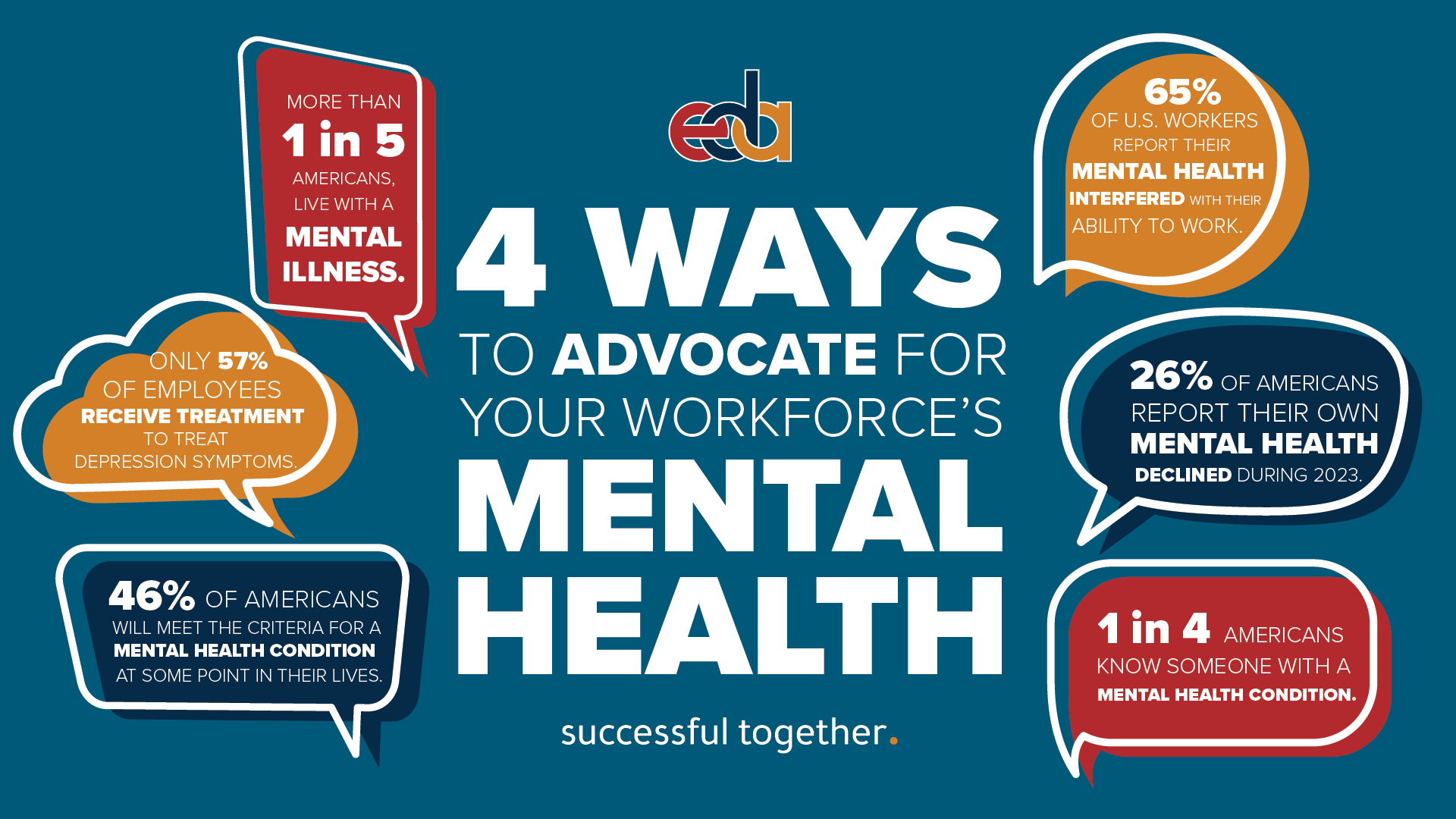I know, I know, you are busy running your business. You have clients, partners, vendors, and distributors to communicate with day in, and day out. You have your leadership team to manage, giving them the room they need to perform their duties, but making sure to be a mindful counsel in areas of client retention, new client recruitment, project management, supply chain management, inventory management, and much, much more.
Who has time to think about the mental health of a workforce?
Well, might I suggest, you do!
An efficient, optimal workplace can only be sustained if the workforce is functioning (hopefully thriving) in an environment of respect, support, and care. Communications structures and support resources and programs that speak to the mental health and wellbeing of a workforce are crucial to reinforcing healthy workplace relationships and behaviors. It only takes a quick review of recent studies and findings to face the fact that a workforce is only as productive as its mental health.
See for yourself:
- According to the National Conference of State Legislatures, more than one in five Americans, or 50 million people, live with a mental illness. At the same time, 46% of Americans will meet the criteria for a mental health condition at some point in their lives. Before the COVID-19 pandemic, communities, states, and employers were already facing strains on resources and their ability to provide adequate mental and behavioral health services. Now, after we have adjusted to life post COVID-19, the issues and concerns regarding mental health in the workplace are even greater.
- According to Mental Health America, over half (54.7%) of adults with a mental health condition did not receive treatment in 2019 and 2020. The pandemic exacerbated these preexisting issues, and nearly 90% of U.S. adults believe the country is facing a mental health crisis. Anxiety and depression symptoms, substance use rates, and deaths from alcohol and drug overdoses have all climbed in the last three years. At the center of this mental health crisis is a shortage of trained professionals to assist those in need. And the crisis appears to be deepening as state policymakers grapple with additional challenges, such as addressing the barriers to mental health services faced by various workers and populations, as well as the lack of mental health support within workplaces.
- The CDC has reported that poor mental health and stress can negatively impact employees, and workplaces, with deterioration of job performance and productivity, engagement in one’s work, communication and collaboration with colleagues and supervisors, and even physical capability and daily functioning. According to CDC findings, mental illnesses such as depression are associated with higher rates of disability and unemployment, with depression interfering with a worker’s ability to complete tasks on average 20% of the time and reducing an employee’s cognitive performance about 35% of the time. Only 57% of employees who report moderate depression receive any treatment to control depression symptoms.
- The National Institute of Mental Health (NIMH) estimates that one in four Americans currently know someone who has a mental health condition. Mental health issues are common and can impact workplace performance, productivity, retention, and healthcare costs.
- Lyra’s 2024 State of Workforce Mental Health Report shows 65% of U.S. Workers report their mental health challenges interfered with their ability to work, with one in every four, or roughly 26%, reporting their own mental health declined during 2023. According to the Lyra report, top mental health issues damaging employees include stress, anxiety, burnout, and depression.
Clearly, people do not leave their mental health issues at home. What’s more, their work environments should not be contributing, or creating, mental health stresses, or concerns.
Here are four things you can do, for starters!
- As a business leader, or member of a leadership team, you can make a big difference in the mental health support your workforce experiences – simply by recognizing the need to do so!
- You can research and institute incentives and programs to inspire and reinforce healthy behaviors. It is within your leadership scope to make mental health resources and information available.
- Your organization can distribute materials, host seminars or workshops, even webinars, to address depression, stress management, burnout and other mental health issues that may impact your workforce. You can create opportunities to reduce workplace stressors, such as creating a meditation room, or other quiet spaces, to help employees reduce anxiety.
- You can empower your human resources team, or your managerial team, or both, to normalize discussions of mental health, and encourage wellness events, such as lunch-and-learns or quarterly presentations, that focus on topics such as stress management strategies.
Take the time to think about the mental health and wellness of your teams. You will find that, if you make mental health a priority – if you become an advocate for mental health in your organization – your workforce, and every aspect of your organization, will be the better for it.
Don’t know where to start? CDC’s Workplace Health Resource Center (WHRC) is a one-stop shop for organizations of all sizes to find credible tools, guides, case studies and other resources to design, develop, evaluate, and sustain workplace health programs. Get the resources you need to start your own workplace health promotion program at www.cdc.gov/WHRC.
